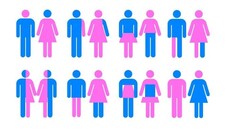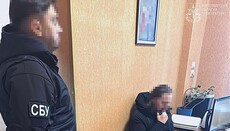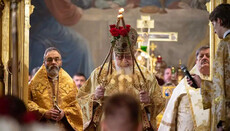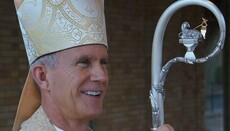Mass media: “1+1” journalist offers money for kissing icons at Kyiv Lavra
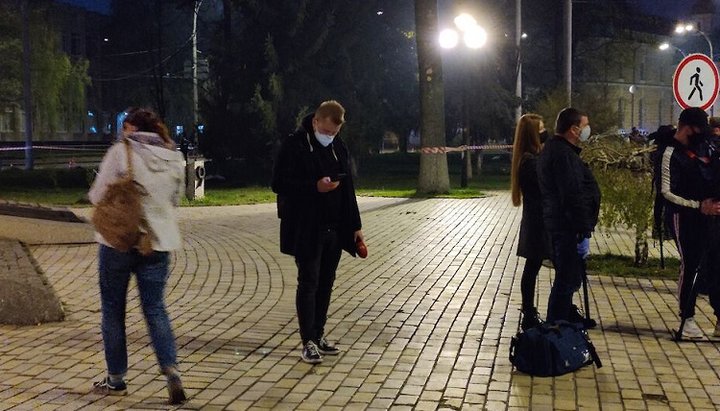
In an attempt to whip another provocative story directed against the UOC, the employees of 1+1 channel suggested that visitors to the Kiev Lavra kiss icons for camera.
On Saturday, April 18, 2020, when the Holy Fire was brought to the Holy Dormition Kiev-Pechersk Lavra, reporters of the Ukrainian TV 1+1 channel offered money to one of the monastery’s visitors for kissing the icon. This visitor turned out to be a freelance correspondent of APnews editorial board, who reported on the incident, stressing that “it is now clear how our colleagues sometimes manage to get highly ‘interesting shots’.”
“I was taking pictures in the church. Apart from priests, there were other journalists, photographers, and cameramen along with me. Everyone tried to find successful shots, including the cameraman and the 1+1 journalist. At some point, they apparently slipped up forgetting that I was their colleague, came up to me together and said, “Excuse me, could you kiss an icon before camera? I politely refused, referring to that ‘being unhygienic and absurd’.Then, without thinking twice and smiling, they offered me money for this. Naturally, I laughed and refused,” said a freelance correspondent for APnews.
The publication noted that the journalists of the “Pluses” left "without waiting for an icon to be kissed by someone else". The streamer, however, managed to take a photo of the man who'd offered him money.
“Now it’s clear how our colleagues sometimes manage to get ‘outstanding materials’,” the editorial board member emphasized.
The man with the 1+1 microphone, captured in the photograph, looks like TSN employee Sergey Galchenko, the author of a number of provocative statements and materials aimed at discrediting the Ukrainian Orthodox Church.
For example, thanks to him, this odious channel would broadcast stories about “militants in robes”, an “investigation” of the cross procession to the Pochaev Lavra (during which he introduced himself as an employee of Russian TV and asked believers of the UOC manipulative questions), and many other materials that incited interreligious discord.


